Cause of death Beaten to death Name Baruch Goldstein Role Physician | Other names Benjamin Goldstein Years active 11 | |
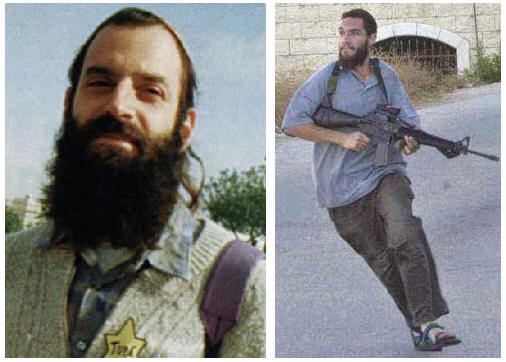 | ||
Occupation Physician (emergency doctor) Spouse Miriam Goldstein (m. 1982–1994) Education Yeshiva University, Albert Einstein College of Medicine | ||
The jews are coming baruch goldstein eminem style
Baruch Kopel Goldstein (Hebrew: ברוך קופל גולדשטיין; December 9, 1956 – February 25, 1994) was an American-Israeli physician, religious extremist, and mass murderer who perpetrated the 1994 Cave of the Patriarchs massacre in Hebron, killing 29 Palestinian Muslim worshippers and wounding another 125. He was beaten to death by survivors of the massacre.
Contents
- The jews are coming baruch goldstein eminem style
- Usa baruch goldstein profile
- Early life and education
- Immigration to Israel
- Massacre
- Gravesite and shrine
- Veneration by extremists
- References
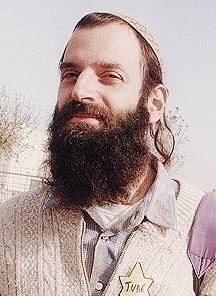
The Israeli government condemned the massacre, and responded by arresting followers of Meir Kahane, criminalizing the Kach movement and affiliated movements as terrorist, forbidding certain Israeli settlers from entering Palestinian towns, and demanding that those settlers turn in their army-issued rifles, although rejecting a PLO demand that all settlers in the West Bank be disarmed and that an international force be created to protect Palestinians. Jewish Israelis were barred from entering major Arab communities in Hebron. The Israeli government also took extreme measures against Palestinians following the deadly riots after the massacre, expelling them from certain streets near Jewish settlements in Hebron, such as Al-Shuhada Street, where many Palestinians had homes and businesses, and allowing access exclusively to Jewish Israelis and foreign tourists.
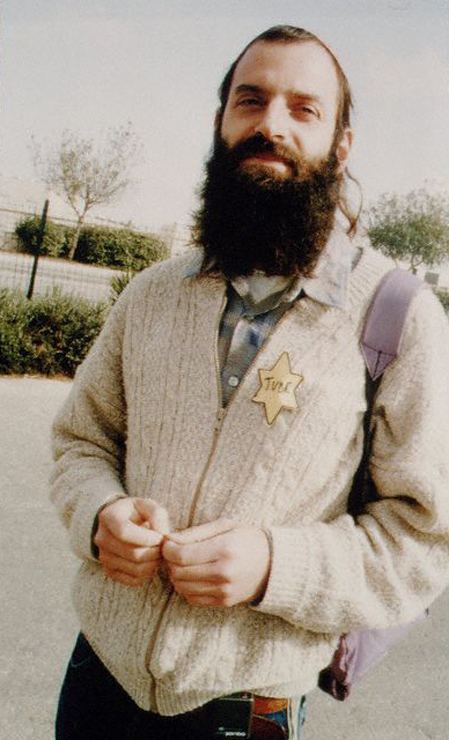
Goldstein's gravesite became a pilgrimage site for Jewish extremists. The following words are inscribed on the tomb: "He gave his life for the people of Israel, its Torah and land." In 1999, after the passing of Israeli legislation outlawing monuments to terrorists, the Israeli Army dismantled the shrine that had been built to Goldstein at the site of his interment. The tombstone and its epitaph, calling Goldstein a martyr with clean hands and a pure heart, was left untouched. After the flagstones around it were pried away under the eye of a military chaplain, the ground was covered with gravel.
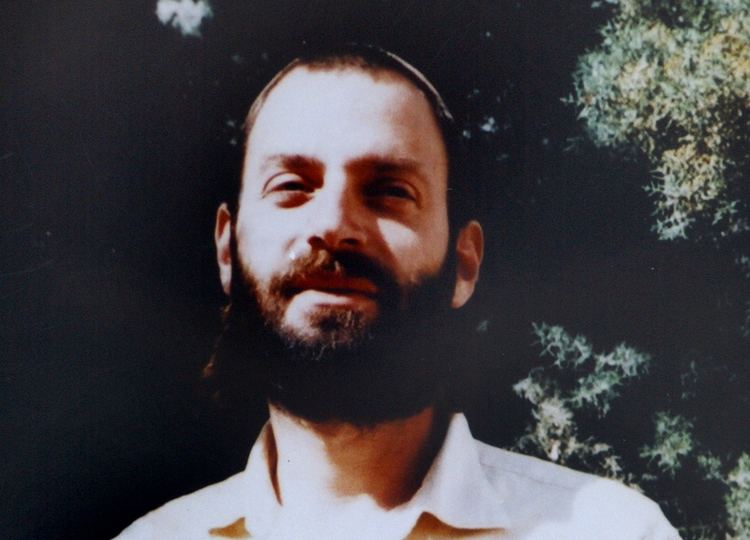
Usa baruch goldstein profile
Early life and education
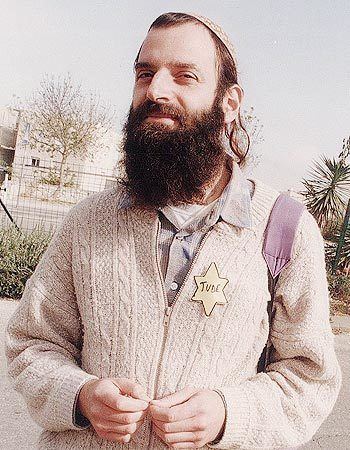
Goldstein was born in Brooklyn, New York, to an Orthodox Jewish family. He attended the Yeshiva of Flatbush religious day school. He studied medicine at Yeshiva University, receiving a medical degree from the Albert Einstein College of Medicine. He belonged to the Jewish Defense League (JDL), a militant Jewish organization founded by his boyhood acquaintance Meir Kahane.
Immigration to Israel
Goldstein immigrated to Israel in 1983. He served as a physician in the Israel Defense Forces (IDF), first as a conscript, then in the reserve forces. Following the end of his active duty, Goldstein worked as a physician, and lived in the Israeli settlement of Kiryat Arba near Hebron, where he worked as an emergency doctor, and was involved in treating victims of Arab-Israeli violence. Israeli press reports claimed that Goldstein refused to treat Arabs, even Arab soldiers serving in the IDF, believing it was against Jewish laws to treat non-Jews even for payment. This was also reflected in comments by his acquaintances. Goldstein was active in Kahane's Kach party, and was third on the party list for the Knesset during the 1984 elections. He compared Israel's democracy to Germany under Nazism, and was in the habit of wearing a yellow star with the word Jude on it.
Massacre
On February 25, 1994, that year's Purim day, Goldstein entered a room in the Cave of the Patriarchs that was serving as a mosque, wearing "his army uniform with the insignia of rank, creating the image of a reserve officer on active duty". He then opened fire, killing 29 worshippers and wounding more than 125. Mosque guard Mohammad Suleiman Abu Saleh said he thought that Goldstein was trying to kill as many people as possible, and described how there were "bodies and blood everywhere". Eventually, Goldstein was overcome and beaten to death by survivors of the massacre. According to Ian Lustick, "By mowing down Arabs he believed wanted to kill Jews, Goldstein was re-enacting part of the Purim story."
Palestinian protests and riots immediately followed the shooting; in the following week, 25 Palestinians were killed (by the Israel Defense Forces), as well as five Israelis. Following the riots, the Israeli government imposed a two-week curfew on the 120,000 Palestinian residents of Hebron, as the 400 Jewish settlers of H2 were free to move around. Israeli Prime Minister Yitzhak Rabin telephoned Palestine Liberation Organisation (PLO) leader Yasser Arafat, and described the attack as a "loathsome, criminal act of murder". The Israeli government condemned the massacre, and responded by arresting followers of Meir Kahane, forbidding certain settlers from entering Arab towns, and demanding that those settlers turn in their army-issued rifles, though rejecting a PLO demand that settlers be disarmed and that an international force be created to protect Palestinians. Goldstein was immediately "denounced with shocked horror even by the mainstream Orthodox", and many in Israel classified Goldstein as insane.
Gravesite and shrine
Goldstein was not allowed to be buried in a Jewish cemetery, and is buried across from the Meir Kahane Memorial Park in Kiryat Arba, a Jewish settlement adjacent to Hebron. The park is named in memory of Rabbi Meir Kahane, founder of the Israeli far-right political party Kach, a group classified by the United States and Israeli governments as a terrorist group. Goldstein was a long-time devotee of Kahane.
The gravesite has become a pilgrimage site for Jewish extremists; a plaque near the grave reads, "To the holy Baruch Goldstein, who gave his life for the Jewish people, the Torah, and the nation of Israel". At least 10,000 people had visited the grave by the year 2000. In 1996, members of the Labor Party called for the shrine-like landscaped prayer area near the grave to be removed, and Israeli security officials expressed concern that the grave would encourage extremists. In 1999, following passage of a law designed to prohibit monuments to terrorists, and an associated Supreme Court ruling, the Israeli Army bulldozed the shrine and prayer area set up near Goldstein's grave. A new tomb has been built, and still receives visits from Jewish pilgrims.
Veneration by extremists
While mainstream Jewish religious leaders, including the chief rabbis of Israel, rejected the suggestion that killing Palestinians was authorized by the Torah, some extremist religious Jews have defended Goldstein's actions.
At Goldstein's funeral, Rabbi Yaacov Perrin claimed that even one million Arabs are "not worth a Jewish fingernail". Samuel Hacohen, a teacher at a Jerusalem college, declared Goldstein the "greatest Jew alive, not in one way, but in every way", and said that he was "the only one who could do it, the only one who was 100 percent perfect". Rabbi Dov Lior of Kiryat Arba declared that Goldstein was "holier than all the martyrs of the Holocaust".
In the weeks following the massacre, hundreds of Israelis traveled to Goldstein's grave to celebrate Goldstein's actions. Some Hasidim danced and sang around his grave. According to one visitor to the gravesite in the wake of the attacks, "If [Goldstein] stopped these so-called peace talks, then he is truly holy because this is not real peace." Some visitors declared Goldstein a "saint" and "hero of Israel".
The phenomenon of the veneration of Goldstein's tomb persisted for years. The grave's epitaph said that Goldstein "gave his life for the people of Israel, its Torah, and its land". In 1999, after the passing of Israeli legislation outlawing monuments to terrorists, the Israeli army dismantled the shrine that had been built to Goldstein at the site of his interment. In the years after the dismantling of the shrine, radical Jewish settlers continued to celebrate the anniversary of the massacre in the West Bank, sometimes even dressing up themselves or their children to look like Goldstein.
In 2010, Jewish settlers sang songs in praise of Baruch Goldstein's massacre demonstratively in front of their Arab neighbours, during celebrations of Purim. A phrase from one song reads, "Dr. Goldstein, there is none other like you in the world. Dr. Goldstein, we all love you... He aimed at terrorists' heads, squeezed the trigger hard, and shot bullets, and shot, and shot."
